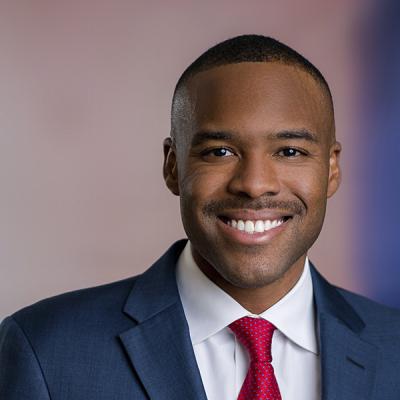A Review of the Affordable Care Act at 10 Years, Part 2: Medicaid Expansion
This post is the second installment in our blog series looking back on the 10-year anniversary of the Affordable Care Act (ACA) and will examine Medicaid expansion under the ACA. Medicaid is joint federal-state program that provides health insurance coverage to people with low incomes. State participation in the program is voluntary, although all states currently participate. The program has historically provided states with a significant amount of flexibility and autonomy in how it is administered. However, in exchange for federal matching funds, states are required to comply with federal Medicaid laws and guidance.
The original Medicaid program was enacted in 1965 and was not designed as a public insurance program. Rather, it served as a health benefit companion to cash-welfare assistance groups, such as dependent children and their caretakers, and was only available to certain “medically needy” individuals who fell within an eligible category.[13] Due to several legislative reforms in subsequent decades, Medicaid dropped its connection to cash-welfare, added new categories, and generally morphed into a program that covered millions of individuals and children across the U.S.[14] Despite these expansions in eligibility, prior to the ACA, the federal Medicaid statute did not provide for general eligibility for low-income individuals, and many states did not cover adults without dependent children.[15]
As enacted, the Medicaid expansion provision of the ACA required states to expand Medicaid eligibility to working-age adults with incomes up to 133% of the federal poverty line (FPL). The provision was mandatory, meaning states had to expand Medicaid to continue participating in the program.
Along with challenging the individual mandate discussed above, the plaintiffs in NFIB v. Sebelius argued that the mandatory Medicaid expansion was an unconstitutional exercise of Congress' powers under the Spending Clause. Despite the fact that the Court agreed to hear the claim, the legal arguments against Medicaid expansion received substantially less legal attention in the months leading up to the decision relative to the arguments surrounding the individual mandate. The only federal district court to strike down the expansion also struck down the entire law, a decision later dismissed on appeal by the appellate court, which reasoned in part that the expansion could not be coercive because state participation in Medicaid was voluntary.[16] Further, no court had ever ruled that any federal funding was unconstitutional based on the theory of coercion. In two prior Supreme Court cases, the Court had mused in dicta that there could potentially be cases in which a financial inducement crossed the line from permissible enticement to coercion, which is essentially the point at which states have no real choice but to accept the funding and enact or administer a program.[17] Even so, the Court’s prior musings on the subject were not binding precedent, and as such, there was no clearly dictated test for coercion or subsequent case law suggesting what types of federal funding would qualify as coercive.
In an extremely complex ruling, a three-justice plurality in NFIB v. Sebelius (which included Chief Justice Roberts, Justice Kagan, and Justice Breyer) found the Medicaid expansion to be unconstitutionally coercive, concluding that it failed to give states sufficient notice to consent to the expansion. The plurality focused in part on the existing Medicaid statute that gave the Secretary of the Department of Health and Human Services (HHS) the ability to withhold all existing funding for noncompliance. In combination with the significant extension in eligibility, which the plurality reasoned was akin to turning Medicaid into a “new program” despite the significant ways in which the program has morphed over the years, the plurality concluded that Medicaid expansion was essentially a “gun to the head” of states. Withholding a state’s federal funding for Medicaid could result in the loss of over 10% of a state’s budget, leaving states with no real choice but to agree to participate in the expansion. Instead of striking down the entire provision, however, the plurality remedied the coercion problem by restricting the HHS Secretary’s authority to withhold existing Medicaid funding from states choosing to not participate in the expansion.
The plurality was joined by Justices Ginsburg and Sotomayor, who found the Medicaid expansion to be permissible but agreed to join with plurality’s remedy to confine the HHS Secretary’s authority in order to form a majority. The remaining four justices – Justices Scalia, Thomas, Alito, and Kennedy – dissented, finding that Medicaid expansion was not only unconstitutional, it was also inseverable from the ACA, meaning the entire law was unconstitutional.
Medicaid Expansion at the Supreme Court -- Impact of NFIB v. Sebelius
The upshot of the Court’s fragmented ruling was to make state participation in Medicaid expansion voluntary. While the HHS Secretary’s existing authority to withhold funds had always been a “stick” to push states to comply with expansion, the “carrot” was supposed to be the federal matching funds to cover the new population of eligible individuals. One concern states had about expanding Medicaid eligibility to previously uninsured adults was the strain it would have on state Medicaid programs. The reasonable fear at the time was that many individuals with untreated health needs would be extremely costly for states to cover, especially in the short-term, as these individuals were likely to seek a high amount of medical care during those initial enrollment years.[18] To offset that financial strain, the federal government would cover the full cost of expansion in each state, with the percentage of expansion costs covered by federal government decreasing from 100% in 2014 to 90% in 2020.
Despite the fact that the federal government would fully subsidize the expansion during the initial years of the law, 25 states initially decided to not expand their Medicaid coverage in 2014.[19] The divide between states that expanded and states that did not bifurcated (unsurprisingly) on partisan lines. The Congressional Budget Office (CBO) had initially calculated that the Medicaid expansion would extend coverage to approximately 17 million working-age adults.[20] After NFIB v. Sebelius, the CBO revised its estimates to reduce the number of new enrollees by 4 million by 2023.[21]
Currently, 36 states and the District of Columbia have expanded Medicaid, with many taking advantage of the Section 1115 Waiver process described below. Between 2013 and 2018, an estimated 13.6 million people gained coverage as a result of the ACA's Medicaid expansion.[22]
Section 1115 Waivers and Medicaid Expansion
Section 1115 of the federal Social Security Act (SSA) allows HHS to waive certain federal Medicaid requirements. For example, by statute, states cannot typically charge premiums for Medicaid enrollees under 150% of the FPL or impose enforceable cost-sharing requirements for enrollees below 100% of the FPL. Both of these requirements can be waived by a Section 1115 waiver. [23]
By law, the HHS Secretary may only approve Section 1115 waivers that further program objectives, test and evaluate hypotheses, and are budget neutral.[24] Practically speaking, the current administration’s goals are highly deterministic in the types of waiver provisions approved. The first round of Section 1115 waivers approved under the ACA under the Obama Administration generally involved alternative expansion models and the imposition of premium payments and cost-sharing requirements on enrollees. For example, the initial Section 1115 waivers approved for Arkansas’ and New Hampshire’s Medicaid expansions allowed those states to purchase marketplace plans for newly eligible adults in lieu of enrolling these individuals in Medicaid.[25]
While CMS approved some limited premium and cost-sharing obligations during the Obama Administration, prior to President Trump’s election, CMS uniformly rejected proposals to make premium payments for individuals who fall under 100% FPL a condition of eligibility, to impose work requirements/referrals a condition of eligibility, or to create cost-sharing requirements that exceed the federal ceiling.[26] For example, CMS, under the Obama Administration, rejected Indiana’s initial proposal to impose work requirements as a condition of eligibility.[27] In March 2017, CMS signaled that is was open to Medicaid expansion proposals that had been rejected under the prior administration in a letter from CMS Administrator Seema Verma to state governors. As ML Strategies wrote at the time, CMS approved work requirements during the first months of 2018 in Arkansas, Indiana, and Kentucky.
Work requirements in Medicaid have now become a particularly contentious partisan issue. While proponents of these requirements have argued that work requirements discourage reliance on government benefits, some consumer groups and other critics have contended that work requirements overly restrict health care access for low-income individuals and are unrelated to the legislative goals of the Medicaid program. ML Strategies has closely monitored the submission and approval of Section 1115 waivers over the last few years; they have produced summaries of important provisions regarding the waivers and provided updates on the status of pending waiver applications.
[13] Sarah Rosenbaum & Timothy M. Westmoreland, The Supreme Court’s Surprising Decision On The Medicaid Expansion: How Will The Federal Government And States Proceed? Health Affairs (Aug. 2012).
[14] Id.
[15] Id.
[16] Id.
[17] South Dakota v. Dole, 483 U.S. 203, 207 (1987).
[18]S. Lyon, I. Douglas & C. Cooke, Medicaid Expansion under the Affordable Care Act. Implications for Insurance-related Disparities in Pulmonary, Critical Care, and Sleep, 11(4) Ann. Am. Thoracic Soc. 661 (May 2014).
[19] Id.
[20] Id.
[21] Id.
[22] Sarah Millet et al., Medicaid and Mortality: New Evidence from Linked Survey and Administrative Data, NBER Working Paper No. 26081 (Aug. 2019).
[23] As a mechanism to allow states alternative forms of administration for Medicaid, Section 1115 waivers long predate the ACA, and states have used the waivers for a range of purposes, including program changes that make Medicaid more generous with regard to eligibility or benefits. In the context of the ACA, however, several states have requested or received waivers to expand Medicaid while imposing requirements on eligibility or utilizing alternative delivery models. Through the waiver process, states submit Section 1115 demonstration proposals to CMS, which then reviews and either accepts, modifies, or denies the proposals.S. Rosenbaum and C. Hurt, How States Are Expanding Medicaid to Low-Income Adults Through Section 1115 Waiver Demonstrations (The Commonwealth Fund, Dec. 2014).
[24] Id.
[25] Similarly, the initial 1115 waiver approved for Iowa allowed the state to use Medicaid expansion funding to purchase marketplace plans for newly eligible adults between 101-138% of the FPL. The initial waivers approved for Indiana, Arkansas, and Michigan imposed cost-sharing and/or premium payment requirements on certain newly eligible enrollees
[26] 42 U.S.C.§ 1396o.
[27] Jane B. Wisher et al., The Urban Institute, Medicaid Expansion, the Private Option, and Personal Responsibility Requirements: The Use of Section 1115 Waivers to Implement Medicaid Expansion Under the ACA 5* (May 2016).

A Review of the Affordable Care Act at 10 Years
April 6, 2020| Blog


